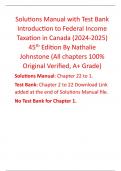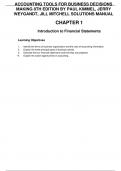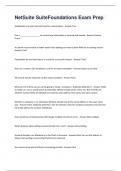Exam (elaborations)
Solutions Manual with Test Bank Introduction to Federal Income Taxation in Canada 2024, 2025 45th Edition By Nathalie Johnstone (All Chapters 100% Original Verified, A+ Grade)
- Course
- Institution
this is original solutions manual and test bank for 45th edition, all other files in the market are fake/old edition solutions manual and test bank. Solutions Manual with Test Bank Introduction to Federal Income Taxation in Canada () 45e Nathalie Johnstone (All Chapters 100% Original Verified, ...
[Show more]





